- Home›
- Healthy Living›
- International Yoga Day 2023: 7 Effective Yoga Asanas For Diabetes Patients
International Yoga Day 2023: 7 Effective Yoga Asanas For Diabetes Patients
By: Priyanka Maheshwari Mon, 19 June 2023 4:19:34
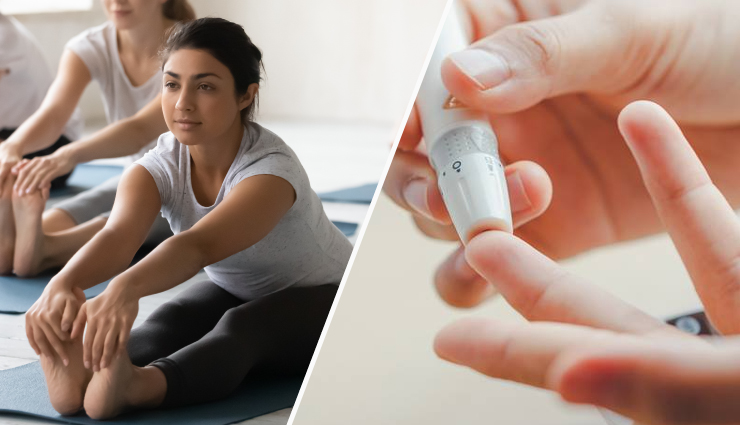
Every year on June 21st, International Yoga Day is celebrated to highlight the multiple advantages of yoga practise. Because of its power to enhance physical, mental, and emotional well-being, this ancient practise has achieved enormous appeal across the world. In this post, we will look at 7 powerful yoga asanas designed exclusively for people with diabetes. These asanas can aid in blood sugar regulation, insulin sensitivity, stress reduction, and general health and vitality. However, before beginning any new fitness plan, it is critical to contact with a healthcare practitioner to confirm that it is appropriate for your unique health requirements. Incorporate these asanas into your daily practise to celebrate International Yoga Day 2023 and feel the transformational impact of yoga on your diabetes path.
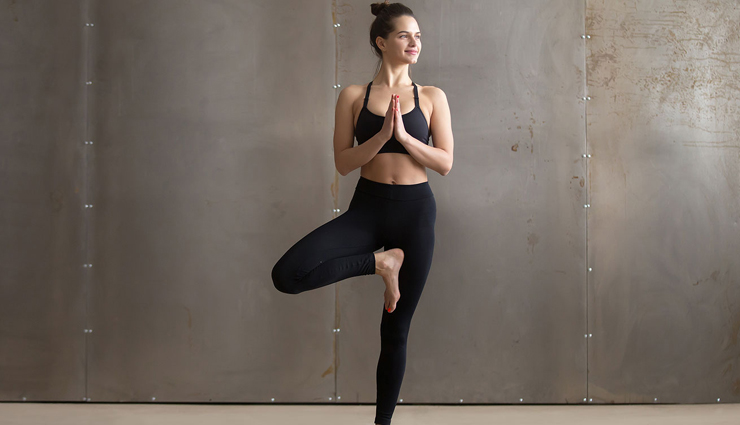
# Vrikshasana (Tree Pose)
Vrikshasana, or the Tree Pose, is a balancing asana that helps improve focus, concentration, and stability. For diabetes patients, this pose stimulates the muscles in the legs and arms, promoting insulin sensitivity and better glucose utilization. It also strengthens the legs and improves overall posture.
Steps to Practice Vrikshasana (Tree Pose):
- Begin standing tall with your feet together, arms at your sides, and your gaze forward.
- Shift your weight onto your right foot, grounding it firmly into the floor. Find stability and a sense of grounding through your standing leg.
- Bend your left knee and place the sole of your left foot on the inside of your right thigh. If it feels more comfortable, you can place it on the inside of your right calf. Avoid placing it directly on the knee joint.
- Once your foot is positioned, take a moment to find your balance. Engage your core muscles by drawing your navel towards your spine.
- Bring your palms together at your heart center in a prayer position, or if you prefer, raise your arms overhead, reaching towards the sky.
- Find a steady gaze at a point in front of you to help maintain balance. Take slow, deep breaths, and stay in the pose for a few breaths, or as long as you feel comfortable and balanced.
- To come out of the pose, gently lower your raised foot to the floor and return to a standing position with both feet together.
- Repeat the same steps on the other side, shifting your weight onto your left foot and placing your right foot on the inside of your left thigh or calf.
Precautions:
- If you have any ankle, knee, or hip injuries, or if you experience dizziness or vertigo, consult a healthcare professional or a qualified yoga instructor before attempting Vrikshasana.
- Practice near a wall or with the support of a chair if you need extra stability.
- Avoid placing your foot directly on the knee joint to prevent strain or injury. Instead, position it on the thigh above or below the knee.
- Listen to your body and do not push beyond your limits. If you feel any pain or discomfort, gently come out of the pose.
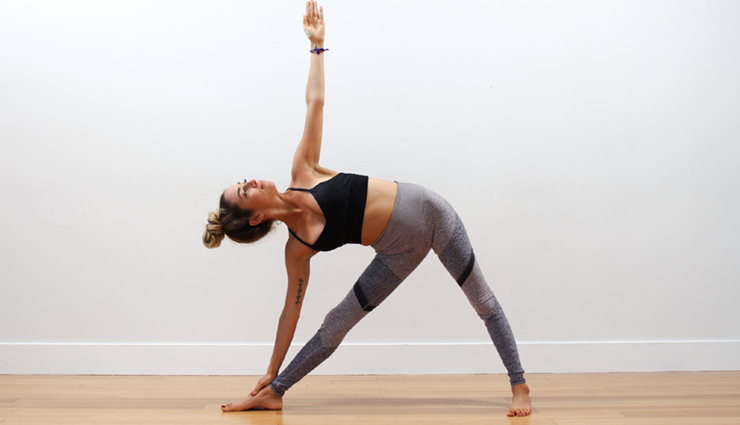
# Trikonasana (Triangle Pose)
Trikonasana, the Triangle Pose, stretches and strengthens the muscles of the legs, hips, and torso. By practicing this asana, the abdominal organs, including the pancreas, receive a gentle massage, aiding in better insulin secretion and digestion. It also improves flexibility and relieves stress.
Steps to Practice Trikonasana (Triangle Pose):
- Begin by standing at the top of your mat with your feet together and arms relaxed by your sides.
- Take a step back with your right foot, about 3 to 4 feet apart, creating a wide stance. Align your heels with each other or slightly wider if it feels more comfortable.
- Turn your right foot out 90 degrees so that it is pointing towards the right side of the mat. Keep your left foot facing forward or slightly inward for better stability.
- Inhale and raise your arms to shoulder height, parallel to the floor. Your palms can face down or face each other, depending on what feels more comfortable for you.
- Exhale and extend your torso towards the right side, shifting your hips to the left. Keep your spine long and your chest open.
- As you reach your right arm forward, tilt your torso further to the right and lower your right hand towards your right shin, ankle, or the floor. Avoid placing your hand on the knee joint.
- Extend your left arm straight up towards the ceiling, creating a straight line from your left fingertips to your left heel. Your gaze can be directed towards your left fingertips or straight ahead, depending on your comfort level.
- Hold the pose for a few breaths, feeling the stretch in your side body and legs. Keep your hips and chest open.
- To come out of the pose, inhale and engage your core as you press through your left heel to rise back up to a standing position. Lower your arms down to your sides.
- Repeat the same steps on the other side, stepping your left foot back and turning your left foot out 90 degrees.
Precautions:
- If you have any neck or spinal injuries, low blood pressure, or are currently experiencing diarrhea or headaches, it is advisable to avoid or modify Trikonasana. Consult a healthcare professional or a qualified yoga instructor before attempting the pose.
- Take it slow and listen to your body. If you feel any pain or discomfort, gently come out of the pose and make necessary modifications.
- Avoid straining or overstretching. Work within your own range of motion and gradually increase it over time.
- Engage your core muscles throughout the pose to support your lower back and maintain stability.
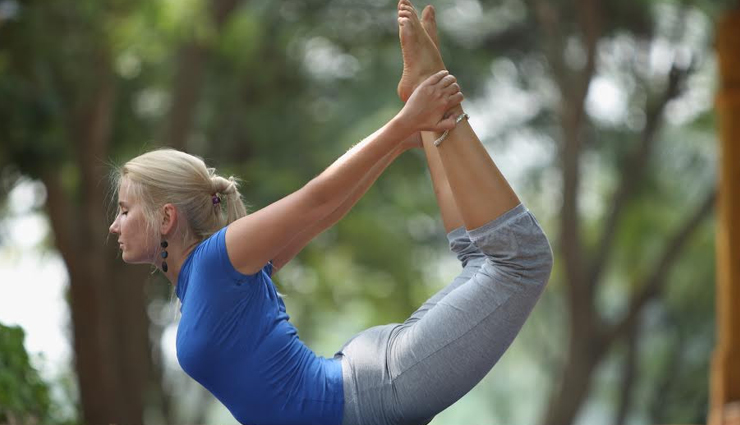
# Dhanurasana (Bow Pose)
Dhanurasana, also known as the Bow Pose, activates the entire body, stimulating the pancreas and improving insulin production. This asana strengthens the back muscles, improves digestion, and massages the abdominal organs, promoting better blood circulation and overall metabolic health.
Steps to Practice Dhanurasana (Bow Pose):
- Begin by lying on your stomach with your legs hip-width apart and your arms resting alongside your body, palms facing upward.
- Relax your entire body and take a few deep breaths, allowing your belly to rise and fall naturally.
- Exhale and bend your knees, bringing your heels towards your buttocks. Reach your hands back and hold onto your ankles or the tops of your feet with your palms.
- Inhale and lift your heels away from your buttocks, which will raise your thighs off the mat. Simultaneously, lift your chest and head off the ground while extending your arms and legs backward.
- Gently kick your legs into your hands and feel the stretch in your quadriceps and hip flexors. Keep your gaze forward and avoid straining your neck by keeping it in line with your spine.
- Continue to breathe deeply and hold the pose for a few breaths, finding a balance between effort and relaxation.
- To come out of the pose, slowly release your grip on your ankles or feet. Exhale as you gently lower your chest, head, and legs back to the mat.
- Extend your legs and relax in a resting position, such as Child's Pose, for a few breaths to counterpose the backbend.
Precautions:
- If you have any recent abdominal or back injuries, hernia, high blood pressure, or are pregnant, it is advisable to avoid or modify Dhanurasana. Consult a healthcare professional or a qualified yoga instructor before attempting the pose.
- Take it slow and listen to your body. If you feel any pain or discomfort, gently come out of the pose and make necessary modifications.
- Engage your core muscles and maintain a lengthened spine throughout the pose to protect your lower back.
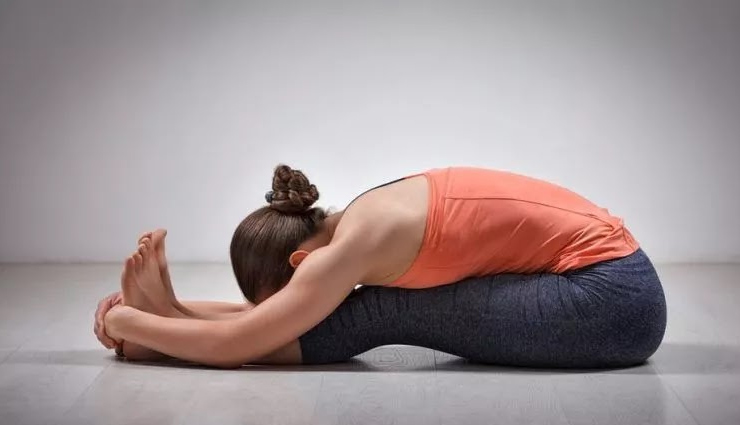
# Paschimottanasana (Seated Forward Bend)
Paschimottanasana is a seated forward bend that stretches the hamstrings, lower back, and spine. By practicing this asana, the abdominal organs are compressed, stimulating the pancreas and improving insulin secretion. It also helps relieve stress and calms the mind, aiding in better blood sugar control.
Steps to Practice Paschimottanasana (Seated Forward Bend):
- Begin by sitting on the mat with your legs extended straight in front of you. Keep your feet together and toes pointing towards the ceiling.
- Sit tall and lengthen your spine, gently engaging your core muscles.
- Inhale and raise your arms overhead, lengthening your spine even more. As you exhale, hinge forward from your hips, leading with your chest.
- Reach your hands towards your feet or ankles, or hold onto your shins, whichever feels comfortable for you. Avoid straining or forcefully reaching if it causes discomfort.
- As you fold forward, focus on lengthening your spine rather than rounding it. Imagine leading with your heart as you move deeper into the stretch.
- If possible, aim to bring your torso closer to your thighs with each exhale, maintaining a relaxed and steady breath.
- Allow the weight of your head and neck to release, and relax your shoulders away from your ears.
- Hold the pose for several breaths, surrendering to the stretch and finding a balance between effort and relaxation.
- To come out of the pose, inhale and slowly lift your torso back up, leading with your chest. Keep your spine long as you return to an upright seated position.
Precautions:
- If you have any recent back or hamstring injuries, herniated discs, or are pregnant, it is advisable to approach Paschimottanasana with caution. Consult a healthcare professional or a qualified yoga instructor before attempting the pose.
- Take it slow and listen to your body. If you feel any pain or discomfort, gently come out of the pose and make necessary modifications.
- Engage your core muscles and maintain a lengthened spine throughout the pose to protect your lower back.
- Avoid forcefully pulling yourself into the forward bend. Instead, allow the stretch to happen gradually and naturally.
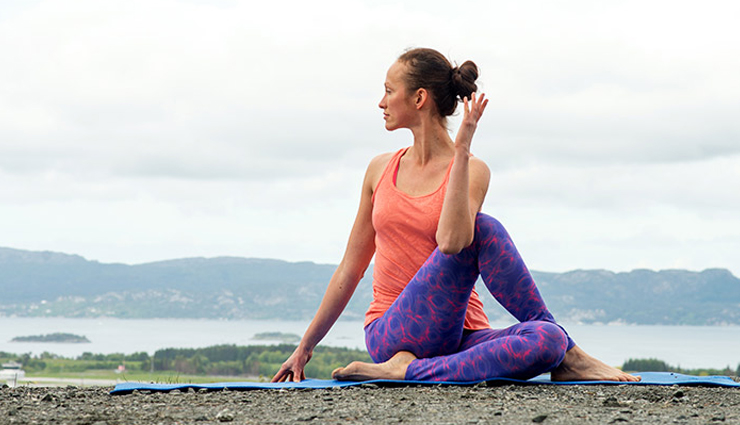
# Ardha Matsyendrasana (Half Spinal Twist):
Ardha Matsyendrasana, the Half Spinal Twist, massages the abdominal organs, including the pancreas, improving digestion and insulin secretion. This asana also strengthens the back muscles, enhances spinal flexibility, and relieves tension in the spine, promoting better overall health for diabetes patients.
Steps to Practice Ardha Matsyendrasana (Half Spinal Twist):
- Begin by sitting on the mat with your legs extended straight in front of you. Keep your feet together and toes pointing towards the ceiling.
- Bend your knees and place your feet flat on the mat, keeping them hip-width apart.
- Slide your left foot under your right leg, bringing it towards the outside of your right hip. The sole of your left foot should be on the mat.
- Cross your right leg over your left, planting the foot on the mat outside your left knee. The right foot can be placed flat on the mat or hooked around your left thigh, depending on your comfort level.
- Inhale and lengthen your spine, sitting tall. As you exhale, twist your torso to the right, placing your right hand behind you for support.
- Bring your left arm to the outside of your right thigh, gently hugging it or hooking your elbow around the knee, depending on your flexibility.
- Inhale to elongate your spine, and as you exhale, deepen the twist by gently rotating your torso to the right. Keep your gaze over your right shoulder, or if it strains your neck, maintain a neutral gaze forward.
- Keep your shoulders relaxed and avoid forcing the twist. Instead, allow your breath to guide you deeper into the pose with each exhale.
- Hold the pose for several breaths, feeling the gentle twist through your spine and torso.
- To come out of the pose, inhale and slowly release the twist, returning to the starting position. Extend both legs forward and relax for a moment.
- Repeat the same steps on the other side, bending your right knee and placing your right foot under your left leg.
Precautions:
- If you have any recent back or spinal injuries, herniated discs, or are pregnant, it is advisable to approach Ardha Matsyendrasana with caution. Consult a healthcare professional or a qualified yoga instructor before attempting the pose.
- Take it slow and listen to your body. If you feel any pain or discomfort, gently come out of the pose and make necessary modifications.
- Engage your core muscles and maintain a lengthened spine throughout the pose to protect your lower back.
- If you have any knee or hip injuries or discomfort, modify the pose by keeping the bottom leg extended or placing a blanket or bolster under the knee for support.
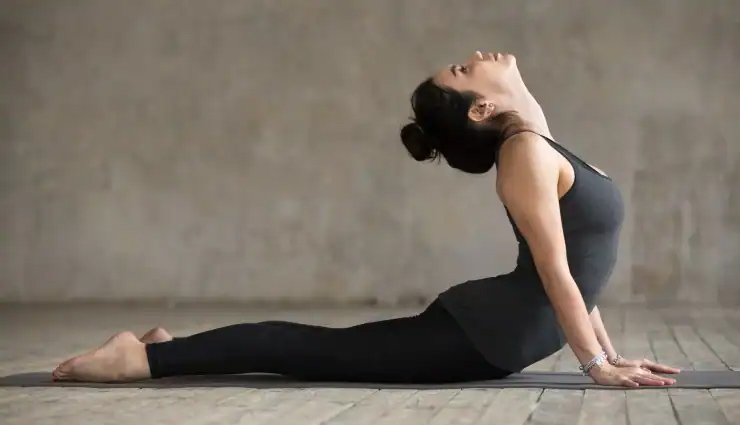
# Bhujangasana (Cobra Pose)
Bhujangasana, or the Cobra Pose, stretches the entire front body, including the abdominal muscles. It stimulates the pancreas and enhances insulin production, while also improving digestion and relieving stress. This pose also strengthens the back muscles and promotes a healthy posture.
Steps to Practice Bhujangasana (Cobra Pose):
- Begin by lying on your stomach on a yoga mat or a comfortable surface. Place your forehead on the mat and your legs straight with the tops of your feet resting on the mat.
- Position your hands next to your shoulders, fingers spread wide, and palms pressing firmly into the mat. Elbows should be tucked in close to your body.
- Inhale deeply and engage your core muscles. As you exhale, press your palms firmly into the mat and slowly lift your head, chest, and upper abdomen off the ground. Use the strength of your back muscles to lift, rather than relying solely on your arms.
- Keep your elbows slightly bent and your shoulders relaxed away from your ears. Maintain a gentle squeeze of your shoulder blades together.
- Continue to lift your torso while keeping your pelvis grounded and the tops of your feet pressing into the mat. Lift only as high as feels comfortable and without any strain in your lower back.
- Find a slight backbend in your spine, lengthening through the crown of your head. Allow your gaze to be forward or slightly upward, avoiding straining your neck.
- Hold the pose for a few breaths, maintaining a steady breath and finding a balance between effort and relaxation.
- To release the pose, exhale and gently lower your chest and head back down to the mat. Rest your forehead on your hands, turn your head to one side, and relax your entire body.
Precautions:
- If you have any recent back injuries, carpal tunnel syndrome, or are pregnant, it is advisable to approach Bhujangasana with caution. Consult a healthcare professional or a qualified yoga instructor before attempting the pose.
- Take it slow and listen to your body. If you feel any pain or discomfort, gently come out of the pose and make necessary modifications.
- Engage your core muscles and maintain a lengthened spine throughout the pose to protect your lower back.
- If you have any neck injuries or discomfort, avoid straining or lifting your head too high. Keep the movement gentle and within your comfortable range of motion.
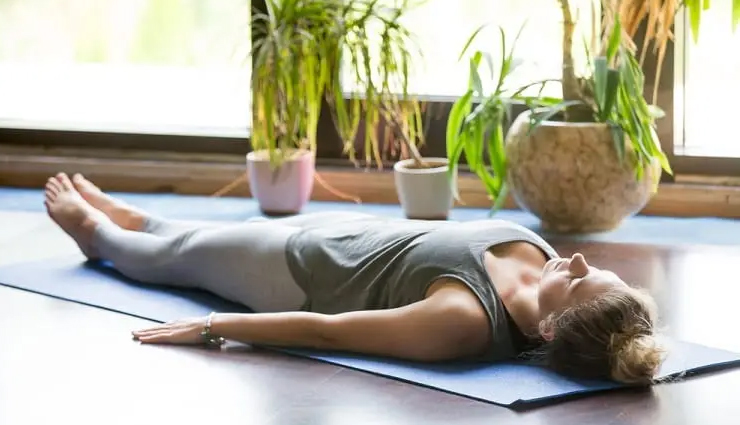
# Shavasana (Corpse Pose)
Shavasana, the Corpse Pose, is a relaxation pose that allows the body and mind to unwind and rejuvenate. By practicing Shavasana, diabetes patients can reduce stress levels, lower blood pressure, and promote overall well-being. It also helps in better sleep patterns and improved management of the condition.
Steps to Practice Shavasana (Corpse Pose):
- Find a quiet and peaceful space where you can lie down comfortably. You can use a yoga mat or lie on a soft blanket or carpeted floor.
- Lie flat on your back with your legs extended and slightly apart. Allow your feet to fall naturally to the sides, creating a sense of relaxation in your entire body.
- Place your arms alongside your body, palms facing upward, and fingers gently curled. Allow your shoulders to relax and soften away from your ears.
- Close your eyes and bring your awareness to your breath. Take a few deep breaths, inhaling through your nose and exhaling through your mouth, releasing any tension or stress.
- Let go of any conscious effort to control your breath. Allow your breath to return to its natural rhythm, feeling the gentle rise and fall of your abdomen with each breath.
- Scan your body from head to toe, consciously releasing any areas of tension or tightness. Soften your forehead, relax your jaw, and let go of any gripping or holding in your muscles.
- Bring your attention to the present moment, allowing your mind to become calm and still. Release any thoughts or worries, and simply be fully present in the stillness of the pose.
- Remain in Shavasana for a minimum of 5 to 10 minutes, or longer if desired. Use this time to surrender and fully relax your body and mind.
- To come out of Shavasana, slowly deepen your breath, gently wiggle your fingers and toes, and stretch your body from head to toe. Bend your knees and roll onto one side, taking a moment to rest in the fetal position.
- When you feel ready, use your hands to press yourself up to a seated position, keeping your eyes closed and maintaining a sense of inner calm.
Precautions:
- Shavasana is generally a safe pose for most individuals. However, if you have any specific health conditions or injuries, it is advisable to consult a healthcare professional or a qualified yoga instructor before practicing the pose.
- If you experience difficulty lying flat on your back or have discomfort in your lower back, you can modify the pose by placing a bolster or folded blanket under your knees for support.
- It's important to create a comfortable and relaxing environment for practicing Shavasana, ensuring that you have a soft mat or blanket to lie on and any additional props or cushions to enhance your comfort.





